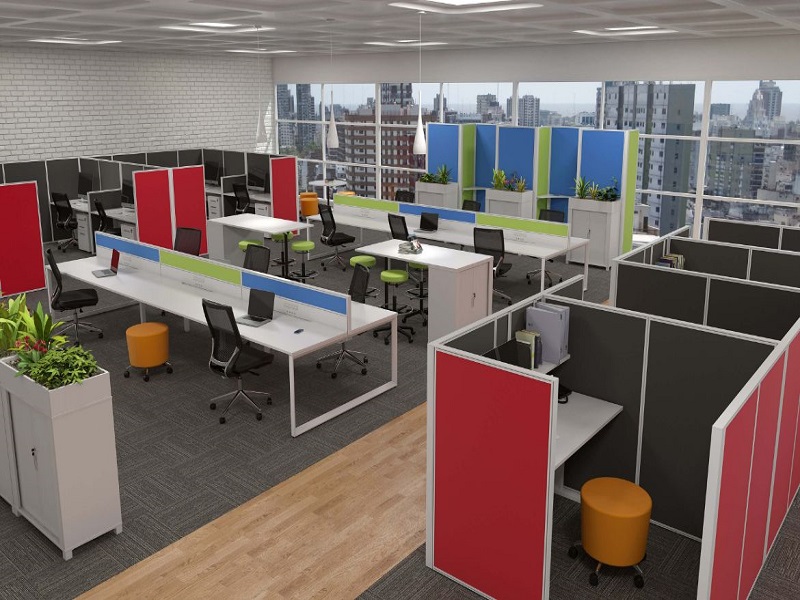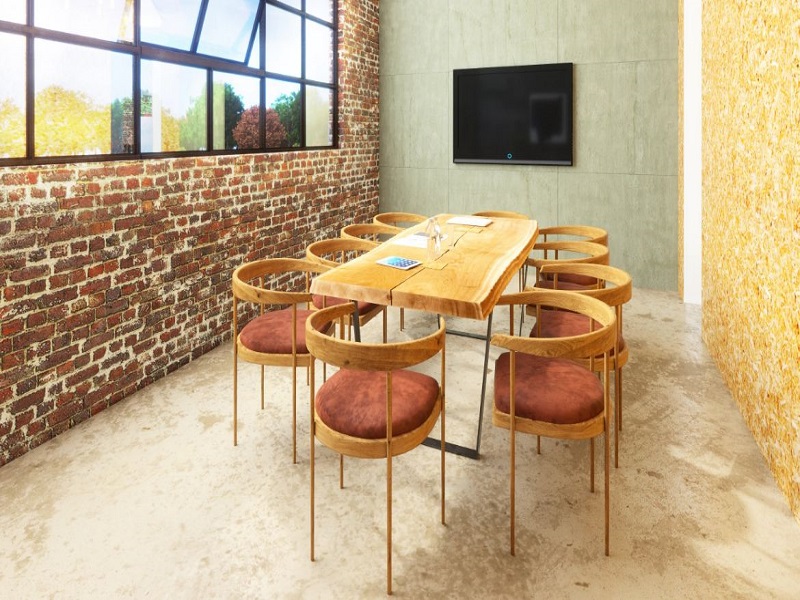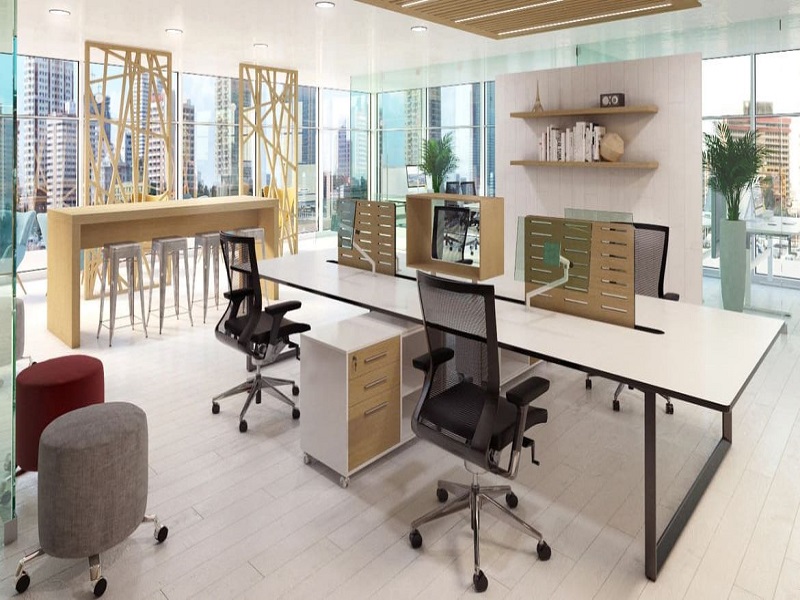Hybrid Workspace Design: Creating a Modern Office for the Future of Work
Posted by The Urban Hyve Team on 30th Oct 2024
The modern office is evolving to meet the demands of a changing workforce. As more companies adopt hybrid work models, the concept of hybrid workspaces has become a focal point in office design. Hybrid workspaces combine the best of both worlds: a functional office environment that caters to on-site collaboration and a flexible layout that accommodates remote working.
The push for hybrid workspace design gained momentum following the pandemic, as businesses realised the benefits of flexibility. A well-designed hybrid office offers employees the freedom to choose where and how they work while ensuring that the office remains a hub of creativity, collaboration, and productivity.
The Evolution of Office Design
Traditional office design has undergone a dramatic transformation in recent years. Gone are the days of rigid cubicles and closed-off spaces. Today’s modern hybrid workspaces prioritise openness, comfort, and flexibility to accommodate a variety of work styles.
Before the pandemic, many offices followed a fixed layout. The primary focus was on dedicated desks and private meeting rooms. However, as the hybrid model gains traction, companies are moving towards open-plan designs and activity-based working environments. According to a study by Microsoft, nearly 70% of workers express a preference for a flexible, hybrid work model, highlighting the demand for offices that support diverse work modes.
Key Features of a Hybrid Workspace
Hybrid workspace design revolves around creating a flexible, functional, and collaborative environment. Here are some key features that define a successful hybrid office:
Open Plan Office with Hotdesking Colourful Workstations and Privacy Pods
1. Flexible Layouts
Flexible layouts are the cornerstone of hybrid workspaces. Instead of assigning fixed desks, many companies now use hot-desking and modular furniture. This approach allows employees to choose their workstations based on their tasks for the day. Spaces are designed to accommodate different activities, including focused work, meetings, and casual discussions.
2. Technology Integration
Modern hybrid offices rely on technology to bridge the gap between remote and on-site workers. Smart office systems, such as room booking software and digital collaboration tools, help employees coordinate and communicate effectively. High-quality video conferencing systems, interactive displays, and wireless charging stations are essential components of a tech-savvy hybrid workspace.
3. Health and Wellness
Incorporating health and wellness into office design is vital in hybrid workspaces. Ergonomically designed furniture, biophilic elements like indoor plants, and adequate natural lighting contribute to a healthier work environment. Enhanced air quality systems and touch-free technologies, such as motion-sensor doors, help ensure a safer workspace for employees.
4. Collaboration Spaces
Collaboration is a key aspect of hybrid workspaces. While remote work promotes flexibility, in-person interactions remain crucial for fostering teamwork and creativity. Offices should feature dedicated areas for group activities, such as huddle rooms, open meeting zones, and lounge-style seating. These spaces should be equipped with the necessary technology to include remote participants seamlessly.
Example: Microsoft redesigned its offices to support hybrid work by incorporating flexible layouts and technology that allows for remote collaboration. This change not only increased employee productivity but also enhanced overall job satisfaction.
Designing for the Hybrid Workforce
Designing an office that caters to both in-office and remote employees requires a strategic approach. The goal is to create a balanced environment that fosters productivity and well-being, regardless of an employee’s location.
1. Remote and On-site Balance
Hybrid office design should include a mix of quiet zones for focused work and open areas for collaboration. This balance ensures that employees have access to the spaces they need to be productive. For remote workers visiting the office occasionally, providing dedicated "touchdown" spots allows them to set up quickly and work efficiently.
2. Incorporating Remote Work Needs
To accommodate remote employees who visit the office, integrate technology that supports virtual communication. Video conferencing zones, adjustable lighting, and soundproof pods are essential features for maintaining a seamless connection between on-site and remote teams.
3. Adaptable Furniture
In a hybrid office, furniture must be adaptable to different work styles. Sit-stand desks, mobile whiteboards, and modular seating arrangements provide the flexibility needed for an ever-changing workforce. These elements allow employees to customise their workspace to suit their needs, whether they are working solo or in a team.
Example: Google’s offices feature adjustable furniture and open spaces that employees can rearrange as needed, fostering a dynamic and collaborative work environment.
Industrial Boardroom Setting with Brick Walls and a Wooden Boardroom Table with Wooden Chairs
Challenges and Solutions in Hybrid Workspace Design
Designing hybrid workspaces comes with its own set of challenges. From maintaining privacy in open-plan offices to preserving company culture, companies need to address these concerns thoughtfully.
Privacy Issues in Open Spaces
Open-plan layouts often lack the privacy that some employees require for focused work. This issue can be mitigated by incorporating acoustic panels, private pods, and designated quiet zones. These elements help reduce noise and provide areas for employees to concentrate without distractions.
Maintaining Company Culture
A strong company culture is vital for employee engagement. To maintain culture in a hybrid setup, design communal spaces that encourage interaction. Regular team meetings, both in-person and virtual, help reinforce connections between on-site and remote workers.
Statistics: According to a survey by Gartner, 76% of HR leaders reported that the organisational culture is one of the most important aspects impacted by hybrid work arrangements.
The Role of Sustainability in Hybrid Office Design
Sustainability is increasingly becoming a focus in modern office design. Hybrid workspaces can align with eco-friendly practices by using sustainable materials, energy-efficient lighting, and incorporating natural elements.
Sustainable Furniture
Opt for furniture made from recycled or renewable materials. Modular furniture not only supports flexibility but also minimises waste, as pieces can be rearranged and reused.
Energy Efficiency
Implement smart lighting systems that adjust based on occupancy and natural light levels. This approach reduces energy consumption and contributes to a more environmentally friendly office space.
Statistics: A survey by Deloitte found that 63% of organisations are prioritising sustainability in their office designs, recognising its importance to employees and clients.
Open Plan Office with 4 Person Workstation with Wooden Modesty Panels and Office Chairs
Steps to Implement a Hybrid Office Design
Transitioning to a hybrid workspace requires careful planning. Here are steps to guide the process:
- Needs Assessment: Evaluate current office space and identify the needs of both on-site and remote employees.
- Space Planning: Develop a floor plan that includes flexible workstations, collaboration zones, and quiet areas.
- Employee Involvement: Involve employees in the design process to ensure the space meets their needs and preferences.
Future of Hybrid Workspaces
The future of hybrid workspaces looks promising, with continuous advancements in technology and a growing emphasis on employee well-being. Virtual reality (VR) and augmented reality (AR) are expected to play a role in remote collaboration, while artificial intelligence (AI) will help optimise space utilisation.
Conclusion
Hybrid workspace design is about creating a flexible and productive environment that supports a diverse workforce. By incorporating adaptable layouts, smart technology, wellness features, and sustainability practices, businesses can create modern offices that meet the evolving needs of their employees. As the hybrid model continues to grow in popularity, the focus on thoughtful and dynamic office design will remain a priority for companies worldwide.
FAQs
What is a hybrid workspace?
A hybrid workspace is an office environment designed to support both in-person and remote work, offering flexible layouts and technology integration.
How does a hybrid office benefit employees?
A hybrid office provides flexibility, promotes collaboration, and supports a work-life balance, leading to increased job satisfaction and productivity.
What is the difference between a traditional and a hybrid office design?
Traditional offices have fixed layouts with assigned desks, while hybrid offices feature flexible workstations, open collaboration zones, and technology to support remote work.
What technologies are essential for hybrid workspaces?
Key technologies include video conferencing systems, smart office solutions, room booking software, and digital collaboration tools.
How can companies ensure privacy in a hybrid workspace?
Companies can ensure privacy by incorporating soundproof pods, acoustic panels, and designated quiet zones within the office.
Are hybrid offices suitable for all industries?
While hybrid offices benefit many industries, their suitability depends on a company's specific work processes, employee needs, and collaboration requirements.
How can an office be transitioned into a hybrid workspace?
Transitioning involves assessing current space, planning for flexibility, integrating technology, and involving employees in the design process.













